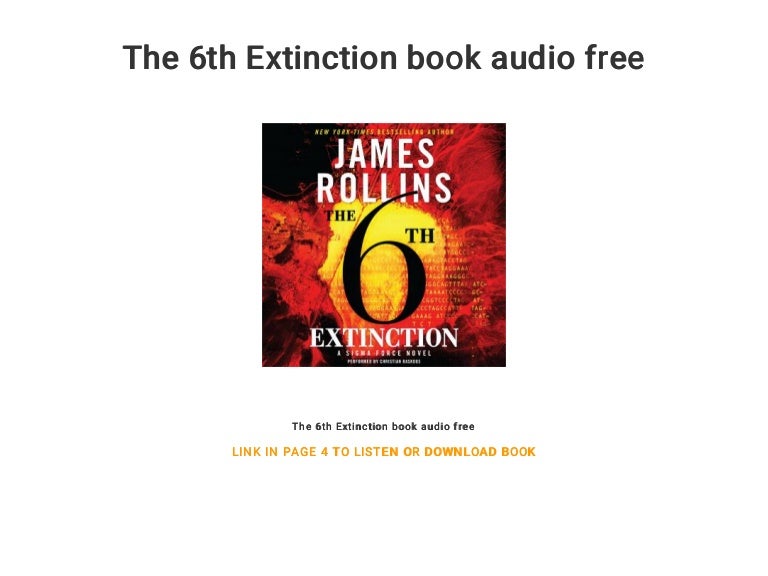
We may have succeeded extravagantly on Earth but we have done so at the expense of just about every other species.

The crucial point about the current extinction is that the agent involved is not an inanimate object or a geophysical force but a living creature, Homo sapiens. "As in Tolstoy, every extinction event appears to be unhappy, and fatally so, in its own way," adds Kolbert. Past culprits have included asteroid impacts, which did for the dinosaurs 66m years ago, and soaring carbon dioxide levels which, 252m years ago, triggered extreme global warming and the extinctions of 96% of all marine species and 70% of all terrestrial vertebrate species.

"And the losses are occurring all over: in the South Pacific, in the North Atlantic, in the Arctic and in the Sahel, in lakes and on islands, on mountaintops and in valleys."Īs a result, we now find ourselves in the midst of a great extinction event, the sixth to strike our planet over the last half billion years. "One-third of all reef-building corals, a third of all fresh-water molluscs, a third of sharks and rays, a quarter of all mammals, a fifth of all reptiles, and a sixth of all birds are headed toward oblivion," states Elizabeth Kolbert in this compelling account of human-inspired devastation. When it comes to sharing a planet, we are the neighbours from hell. And for good measure, there are the fungal diseases, spread by humans, that now threaten every bat species in America and every amphibian species on the planet. Or consider the swaths of the Amazon basin ploughed up for farming, thus destroying the homes of countless rainforest denizens.

Then there are the coral reefs, homes to vast numbers of marine animals, that have been dynamited by fishermen and bleached by our acidifying oceans. In colonising our planet's nooks and crannies, most new species that we have encountered have either been wiped out directly – like the mastodons, mammoths and Neanderthals laid low by our stone age ancestors – or indirectly by the pests we introduced in our wake, like the brown tree snake or the Central American wolfsnail, introduced to Hawaii in the 1950s, which has since killed off around 90% of the islands' 700 native snail species.


 0 kommentar(er)
0 kommentar(er)
